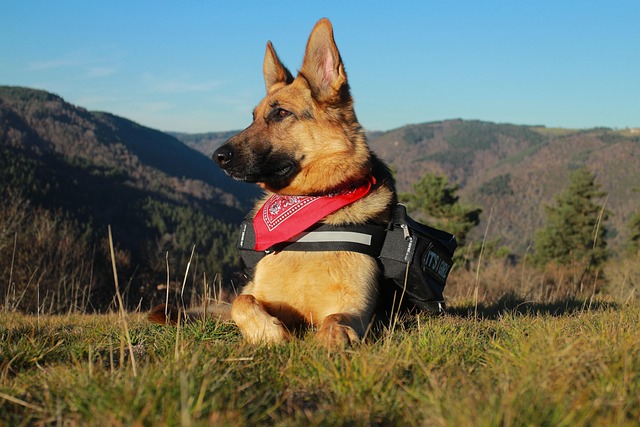A German Shepherd could be your perfect companion, but you should weigh their pros and cons first. These remarkable dogs are worldwide. Their quick learning ability lets them master new commands in just five repetitions, though this intelligence means they need constant mental challenges. ranked as the third smartest dog breed
These versatile working dogs offer much more than just brains and beauty. German Shepherds create deep bonds with their families and excel at everything from service work to home protection. But they need at least two hours of daily exercise. Their powerful bark reaches 106 decibels – not exactly apartment-friendly!
My research into German Shepherds revealed some surprising facts. Their thick double coats shed heavily all year and need regular grooming. Standing 24-26 inches tall and weighing 66-88 pounds, these large dogs come with specific health concerns like hip dysplasia. This means a serious commitment of both time and money. The original costs run $500-$1000, while yearly expenses range between $1000-$2000.
Ready to learn if a German Shepherd matches your lifestyle? Let’s take a closer look at their complete pros and cons to help you decide.
Comparison Table
| Characteristic | Pros | Cons | Key Requirements/Notes |
|---|---|---|---|
| Intelligence & Training | – Ranks as world’s 3rd smartest dog breed – Picks up commands in 5 tries – Follows commands 95% of time – Solves problems naturally | – Shows stubbornness with mixed signals – Tends to find ways around rules – Just needs mental challenges daily | – Daily brain games – Lifelong training practice – Short 5-10 minute puppy lessons |
| Training & Socialization | – Takes to training easily – Loves positive feedback | – Must start training early – Needs complete socialization – Bad habits form without proper training | – Begin socializing at 8 weeks – Set firm, steady rules – Might need expert training help |
| Loyalty & Protection | – Builds deep family connections – Born with protective nature – Guards home naturally | – Protection can go overboard – Stays distant with newcomers – Must be handled right | – Early social skills matter – Set clear limits – Steady training helps |
| Working Abilities | – Shines in many roles – Lives to work – Adapts to any task | – Must have a purpose – Gets rowdy without tasks – Needs to stay busy | – Give regular jobs – Keep body and mind active – Thrives with planned work |
| Energy Levels | – Built for action – Never runs out of steam – Perfect workout buddy | – Needs lots of exercise – Acts up without activity – Takes much of your time | – 60-120 minutes daily moves – Mix physical and mental work – Split exercise through day |
| Appearance | – Looks regal and proud – Comes in many colors – Built like an athlete | – Needs regular grooming – Sheds a lot – Takes work to maintain | – Double coat needs attention – Males: 24-26 inches tall – Females: 22-24 inches tall |
| Grooming | – Coat handles weather well – Fur protects naturally | – Sheds all year long – Heavy coat drops twice yearly – Needs steady care | – Brush 3-4 times weekly – Special brushes needed – Bath every 3-4 months |
| Family Compatibility | – Loves kids – Shows patience and care – Guards family well | – Might be too much for tots – Tries herding children – Needs watching with kids | – Start kid exposure early – Must blend with family – Watch with young children |
| Space Requirements | – Fits in if needs are met – Loves yard time | – Too big for apartments – Must have room to move – Needs yard space | – Yard at least 1000 sq ft – Indoor space 500-1000 sq ft – Fencing 5 feet high |
| Lifestyle Fit | – Perfect for active homes – Born outdoor partner | – Not for busy people – Hates being alone – Takes lots of your time | – 4 hours alone max – Needs daily attention – Must exercise regularly |
Highly Intelligent and Easy to Train

Image Source: American Kennel Club
German Shepherds’ extraordinary intelligence stands out as their biggest advantage when you look at their pros and cons. These amazing dogs rank according to renowned canine researcher Dr. Stanley Coren. Their remarkable cognitive abilities don’t just impress – they shape your whole experience as an owner.The 3rd most intelligent dog breed
German Shepherd intelligence and knowing how to learn
German Shepherds have exceptional learning capabilities that make them unique among other breeds. These brilliant dogs grasp new commands in less than five repetitions and follow these commands 95% of the time right away. Their intelligence shows up in three distinct areas:
- Instinctive intelligence: Their natural ability to perform tasks they were bred for, including herding, protection, and service work
- Adaptive intelligence: Their problem-solving abilities and capacity to learn from past experiences
- Working and obedience intelligence: Their remarkable trainability and command retention
These dogs show an amazing talent for pattern recognition and emotional intelligence. Their cognitive abilities match those of a 2.5-year-old human. They process information, analyze situations, and can even sense their owner’s needs before they’re expressed.
Training a German Shepherd: What to Expect
Training these dogs becomes a rewarding experience because of their work ethic and desire to please. The best training starts with early socialization at 8 weeks of age. Early training prevents German Shepherds from “making their own rules,” which happens quickly without structured guidance.
These dogs respond well to positive reinforcement methods. They pick up on your reactions quickly, so praise for good behavior works better than punishment for unwanted actions. Short training sessions work best – just 5-10 minutes for puppies to match their attention span.
Clear structure makes all the difference. German Shepherds excel with regular tasks and clear boundaries. Their intelligence can turn into a challenge without this structure and lead to behavior problems.
Why smart dogs need smart owners
Smart handling becomes the most important challenge of owning a German Shepherd. These dogs were bred with specific purposes in mind—herding livestock, protection, or hunting. They just need mental challenges to stay happy and fulfilled.
German Shepherds often develop unwanted behaviors like excessive barking, chewing, or pulling on the leash without enough mental stimulation. This creates a big challenge for owners who aren’t prepared.
Smart dogs can be stubborn if they spot inconsistencies in training. Their problem-solving abilities help them find “loopholes” in rules. They’re not being deliberately disobedient – they’re just using their smarts to get what they want.
Prospective owners thinking about german shepherds’ pros and cons should know these dogs need:
- Daily mental enrichment through puzzle toys, new experiences, and training challenges
- Clear, consistent rules without loopholes
- A balance of physical exercise and mental stimulation
- Ongoing training throughout their lives, not just puppyhood
A German Shepherd’s intelligence becomes their greatest strength or their biggest challenge. It all depends on how ready you are to tap into their remarkable mental abilities.
Loyal and Protective Companions
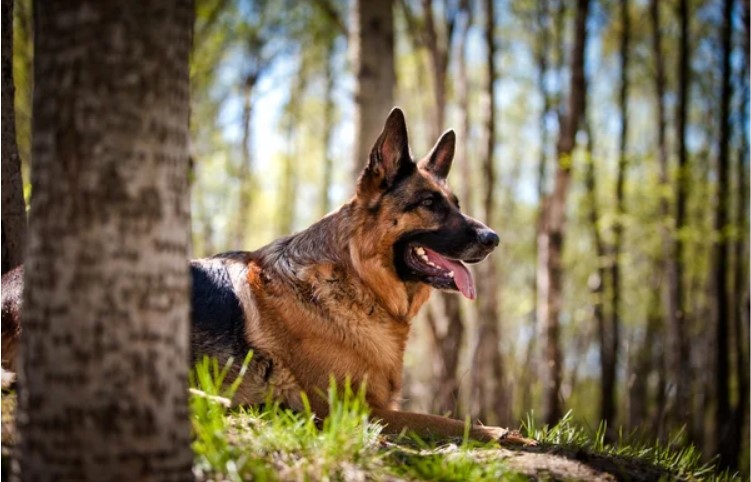
Image Source: Scott’s K9
Can Be Only Protective or Aggressive
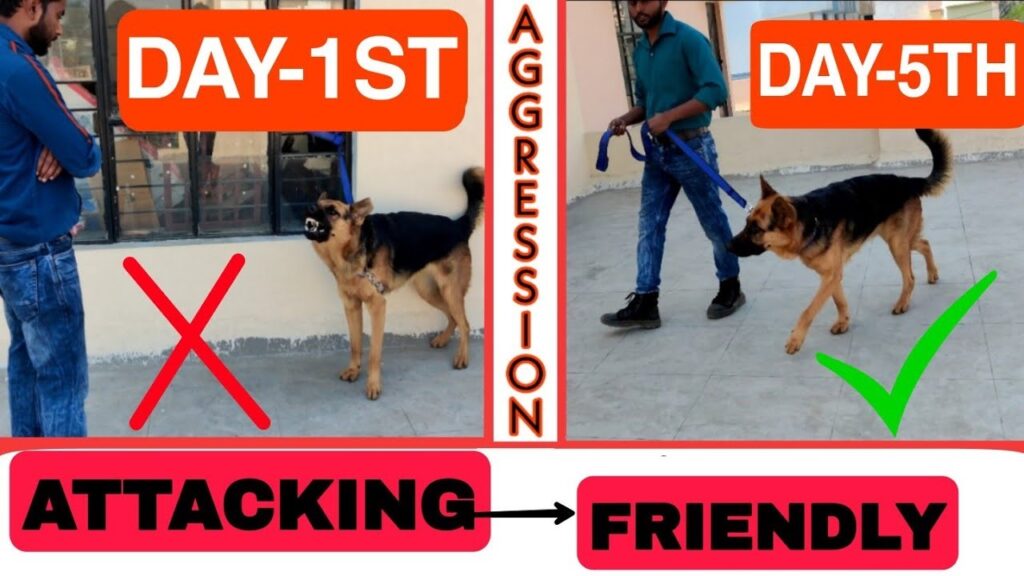
German Shepherds’ loyalty can be a wonderful asset, but this trait brings challenges. Dog owners need to know where protective instincts stop and problem behaviors begin to weigh their German Shepherd pros and cons.
When protectiveness becomes a problem
German Shepherds naturally act as protectors because of their heritage as guardians and shepherds. This instinct can turn problematic. Dogs without proper training might lunge aggressively at visitors, bark too much at people walking by, or growl at your friends who come near you.
Your German Shepherd’s potential overprotectiveness stands out as one of the biggest drawbacks. The dog isn’t being mean—it truly believes it’s doing its job to protect you and your space. This behavior can quickly move from simple alerts to dangerous aggression without the right guidance.
Signs that protectiveness has gotten out of hand include:
- Growling or showing teeth at approaching people
- Blocking visitors from family members
- Standing between you and others
- Reacting badly to normal social situations
Managing aggression in German Shepherds
The quickest way to handle aggressive tendencies starts with finding what causes the behavior. The trigger could be fear, territory, or resource guarding. Each needs its strategy to manage.
Good socialization helps prevent aggression. Your German Shepherd needs exposure to people of all types, places, and situations. This helps them tell the difference between normal interactions and real threats. They’ll stay calmer in new situations instead of getting defensive.
This breed responds best to positive reinforcement. Give rewards for calm behavior around triggers rather than punishing reactions. Commands like “watch” for alerting and “leave it” to relax help control protective instincts. Everyone in your family should use the same commands and set the same boundaries.
Severe cases need professional help. A qualified dog behaviorist can create a specific plan to tackle aggression triggers. Note that punishment often makes aggression worse instead of better.
Importance of early behavior correction
You must fix problem behaviors early. Many owners think aggressive tendencies will get better with time. This rarely happens without stepping in. Small reactions can turn into dangerous aggression if nobody addresses them.
Start teaching important commands like “drop it” and “leave it” during puppyhood. These prevent resource guarding, which many German Shepherds display. Focus on building positive connections with potential triggers before problems show up.
First-time dog owners might struggle with their German Shepherd’s pros and cons in this area. The breed needs someone who spots subtle body language and fixes issues before they grow. German Shepherds might decide for themselves what looks threatening without proper guidance, and they’re often wrong.
Physical activity and mental challenges help prevent aggression. A tired dog usually behaves better. Regular exercise reduces stress that could show up as reactive behavior.
Versatile Working Dogs with Purpose
The German Shepherd’s exceptional working abilities stand out when we look at their pros and cons. These dogs are more than family companions – they’re natural-born workers with a deep desire to serve. Their remarkable versatility has made them the world’s leading service and working dogs for over 100 years.
Roles German Shepherds excel in
These amazing dogs adapt well to many professional roles. Their career paths are quite diverse:
- Law enforcement and military work – They excel in tracking criminals, patrolling areas, and apprehending suspects
- Search and rescue operations – Their exceptional scent detection abilities are a great way to get results in finding missing persons
- Medical detection – Some are trained to detect conditions ranging from cancer to seizures
- Guide and assistance work – Although Labradors are now more common, German Shepherds were originally the primary breed for guiding the visually impaired
- Herding – They still perform their original purpose of tending sheep and livestock
Their unique mix of intelligence, physical strength, and keen senses makes them so adaptable. These dogs can handle tasks that other breeds find impossible, thanks to their amazing sense of smell and agility.
Why do they thrive with jobs and tasks?
The German Shepherd’s need for purpose is vital to anyone thinking about getting one. These dogs need jobs to stay mentally healthy.
Their breeding history has given them a built-in work ethic. Bored German Shepherds without meaningful tasks often turn destructive – bad news for unprepared owners. They might start barking too much, digging holes, or chewing furniture.
My experience shows that giving German Shepherds real work helps in several ways:
Their smart minds stay sharp with mental stimulation. The physical activity keeps them fit and healthy. Best of all, meaningful tasks create a stronger bond between dog and owner based on trust and shared goals.
Examples of working German Shepherds
Some German Shepherds throughout history have shown just how capable this breed can be. Rin Tin Tin, who was an American soldier rescued from Germany during WWI, starred in 27 Hollywood films. He helped make German Shepherds popular as family pets while showing how trainable they are.
The first American Seeing Eye Dog was a German Shepherd named Buddy (originally called Kiss). Labradors might lead this field now, but Buddy blazed a trail that changed many lives.
Apollo represents another amazing case that showed extraordinary bravery during crises. His steadfast dedication typifies working German Shepherds.
Modern German Shepherds keep doing incredible work. They find explosives in war zones and locate survivors in earthquake rubble. Their versatility remains unmatched. These points explain why many people see this working ability as a huge plus when weighing a German Shepherd’s pros and cons.
Without doubt, German Shepherds rank among the most versatile and useful dog breeds ever developed. Their working ability becomes an incredible asset with the right owner who provides purpose and direction.
High Energy Levels Demand Daily Exercise
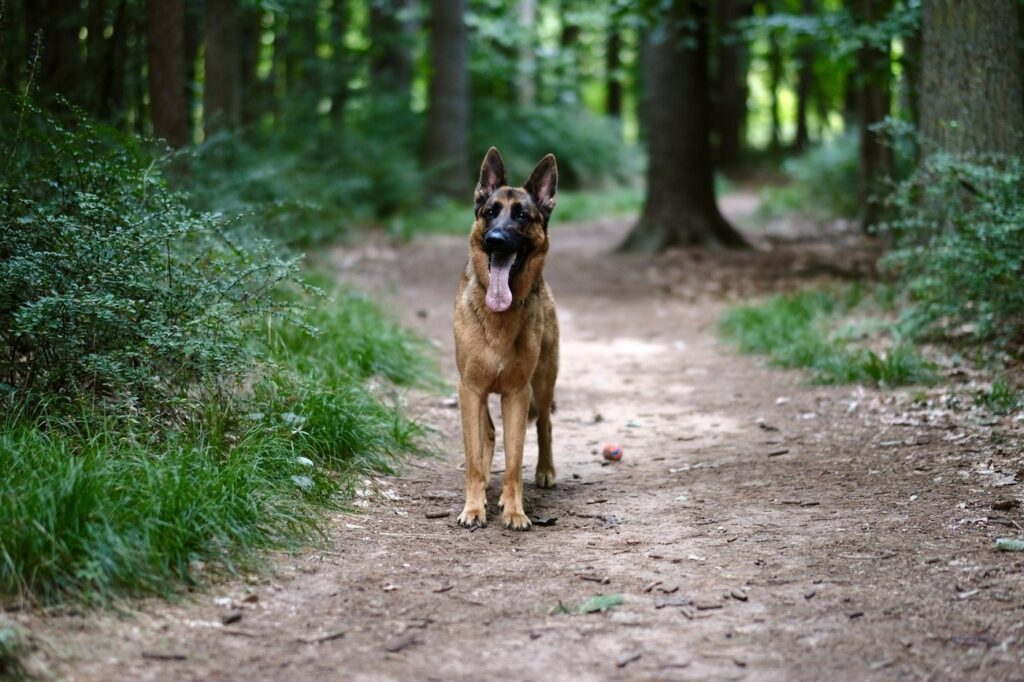
Image Source: Reddit
The extraordinary energy levels of German Shepherds are both a gift and a challenge that tops the list of pros and cons. These dogs were bred as working animals, not couch potatoes. Their natural drive shows up as boundless energy that needs regular outlets.
Exercise needs of a German Shepherd
German Shepherds need lots of daily exercise – at least 60-120 minutes. Adult dogs typically need 90 minutes spread through the day. Many experts say up to two hours of combined physical and mental activity works best for their well-being.
These dogs are special because they need both physical workouts and brain games. A quick walk around the block won’t cut it – German Shepherds thrive on structured, meaningful activities that challenge their body and mind.
The exercise needs change with age. Puppies should get five minutes of formal exercise per month of age. Older German Shepherds need adjusted routines that work with their physical limits while keeping their minds active.
What happens without enough activity
As I wrote in my previous posts about German Shepherd pros and cons, these smart dogs will find their fun without proper exercise, usually in ways you won’t like.
Bad behaviors can pop up quickly:
- They’ll chew, dig, and bark too much
- You’ll see restlessness and hyperactivity
- They might try to run away
- Anxiety or depression can develop[214]
- Aggression becomes more likely
The physical effects are just as bad. Weight gain is almost certain[214], which can hurt their joints – a big worry since they’re already prone to hip problems. Their mental health takes a hit too, as they get bored and frustrated[233].
One of the biggest German Shepherd drawbacks: “Their brains need to be exercised, as well”. Even a physically tired dog can act up without mental challenges.
Ideas for physical and mental stimulation
German Shepherds excel at many activities that meet their exercise needs. Their working background makes these options great:
Hiking lets them explore while getting exercise. Swimming gives them a joint-friendly workout[223].
Scent games tap into their amazing tracking skills. Games like hide-and-seek with toys or treats, puzzle solving, and training sessions are vital for mental exercise[231][232].
Studies show mental workouts can tire dogs more than physical exercise alone. That’s why mixing obedience training, new tricks, and problem-solving works so well for this breed.
These dogs love agility training, which challenges both body and mind. Games of fetch, tug-of-war, and flirt poles give them high-energy outlets while deepening their commitment to you[223].
Exercise needs are a key factor in the German Shepherd pros and cons list. They must stay active – it’s essential for their health, happiness, and good behavior. Meeting these needs might be demanding, but it builds a strong partnership with one of the world’s most capable dogs.
Beautiful and Striking Appearance
The German Shepherd’s striking looks are one of the most talked-about features when people weigh this breed’s advantages and challenges. These dogs naturally draw attention and respect without making a sound. Their distinctive look has made them famous worldwide.
German Shepherd physical traits
German Shepherds show strength and grace with their muscular, slightly elongated bodies and well-balanced proportions. Their physical build features smooth, flowing curves instead of sharp angles. You can spot their unique silhouette from far away. Male dogs reach 24-26 inches at the shoulder. Females are slightly smaller at 22-24 inches. This size gives them a powerful yet nimble presence.
The breed’s signature features include a square muzzle, erect ears, and a bushy tail that create their classic profile. A black mask frames their almond-shaped, dark brown eyes. Their expression shows intelligence and confidence. Their facial structure works well and looks good. Strong jaws and scissor bite reflect their working background, while their alert ears catch sounds from every direction.
German Shepherds come in several impressive coat colors:
- Black and tan or black and red combinations (most common)
- Sable patterns with black-tipped hairs
- Less common variations include black and cream, black and silver, pure black, and white
- Rare colorings such as liver, blue, and panda patterns
Their double coat has a dense, water-resistant outer layer that protects a thick undercoat. This practical feature helps them work in different environments and adds to their stunning appearance.
Why their look is admired worldwide
The German Shepherd’s appearance strikes the right balance between beauty and function. Their strong, athletic build shows the capability and versatility that make these dogs such rewarding companions. Every part of their body serves a purpose – from powerful back legs that help them move smoothly to their weather-proof coat built for outdoor work.
People looking at German Shepherd pros and cons often fall in love with what experts call the breed’s “look of quality and nobility.” Their distinctive appearance has made them movie stars – from Rin Tin Tin in the 1920s to modern films. This exposure has helped make them an iconic breed.
Their natural movement shows off their physical harmony. These dogs move with an easy trot that can quickly turn into impressive speed. This showcases how well their physical structure works with their movement.
The German Shepherd’s unmistakable good looks add to their list of advantages and challenges. They’ve won admirers who value both their beauty and practicality. Their appearance reflects their character: strength, intelligence, and a dignified presence that sets them apart from other breeds.
Heavy Shedding and Grooming Needs
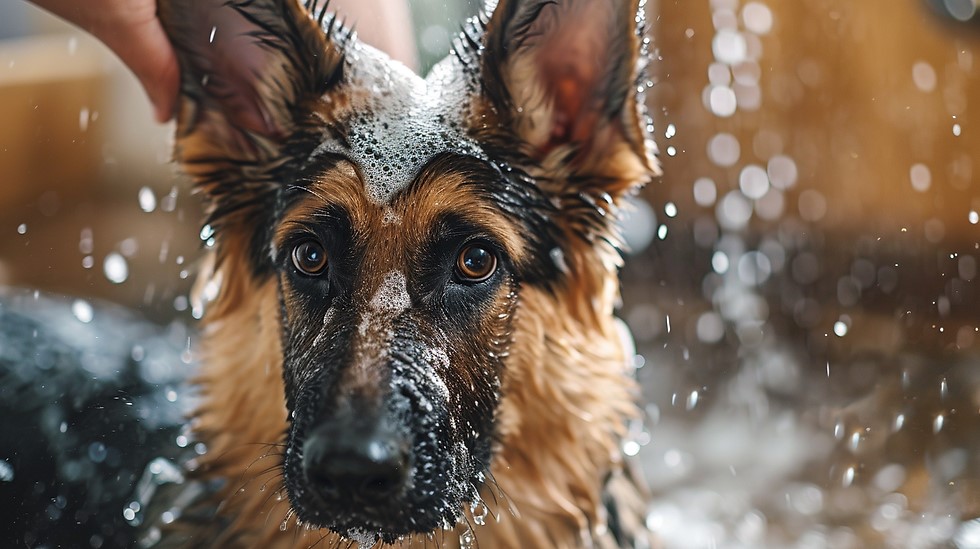
Image Source: Riverview Grooming
These magnificent dogs earned their nickname “German Shedders” and with good reason, too. The endless shedding stands out as one of the biggest drawbacks of German Shepherd ownership. My wake-up call came when tumbleweeds started rolling across my floors, even with regular grooming. Anyone thinking about German Shepherd pros and cons should understand their grooming needs before making this long-term commitment.
German Shepherd coat and shedding patterns
A distinctive double coat makes German Shepherds unique. They sport a weather-resistant outer layer and a soft, insulating undercoat. This practical combination serves them well outdoors but creates endless housekeeping challenges. Your German Shepherd will shed all year long. Twice a year, they go through an intense process called “blowing their coat”. The dogs shed their entire undercoat during spring and fall to adapt as temperatures change.
Your German Shepherd’s shedding will follow this pattern:
- Light to moderate daily shedding throughout the year
- Heavy undercoat loss in spring as winter coat sheds
- Another heavy shed in the fall to prepare for winter
Long-haired German Shepherds might seem to shed less than their short-haired cousins. The shed fur gets caught in their longer outer coat instead of landing on your furniture. This trapped fur can lead to matting problems that need extra grooming attention.
Grooming tools and routines
Your German Shepherd’s coat needs specific tools and regular care. Start with an undercoat rake to reach deep where most shedding happens. A slicker brush helps remove loose outer coat fur. De-shedding tools like the Furminator work best during heavy shedding periods.
Regular grooming makes all the difference. Brush your German Shepherd 3-4 times weekly to control loose fur. Daily brushing becomes essential during shedding seasons. Well-brushed German Shepherds only need baths every 3-4 months. Too much bathing strips natural oils, which can cause skin problems and, worse, shedding.
Living with fur: What to expect
Fur will become part of your daily life. German Shepherd owners often joke about going through multiple vacuum cleaners during their dog’s lifetime. A quality vacuum designed for pet hair becomes a must-have investment rather than a luxury item.
Life with a German Shepherd means:
- Furniture covers protect your couches from becoming fur magnets
- Hard flooring makes cleanup much easier than carpet
- Lint rollers become as essential as your house keys
- Regular cleaning prevents fur buildup
- Air purifiers help sensitive family members breathe easier
The heavy shedding ranks among the toughest parts of German Shepherd ownership. The right tools and consistent routines make this challenge manageable, though it never goes completely. Take time to think about your tolerance for finding fur in unexpected places – even in your morning coffee – before bringing one home.
Great with Families and Children
Family compatibility is a vital factor when weighing the pros and cons of a German Shepherd. These dogs’ natural gentleness with children often surprises people who only know about their protective side.
German Shepherds as family dogs
German Shepherds are bred to be gentle family pets and steadfast guardians. They build exceptional bonds with family members while keeping what breed experts call “a certain aloofness that does not lend itself to immediate and indiscriminate friendships” with strangers. This balanced temperament makes them perfect for families who value both companionship and protection.
These dogs do best when they grow up right in the household and take part in family activities. They need to feel like part of their “pack” – your family unit. Their sharp minds and eagerness to please help them adapt to different family situations, as long as you guide them properly.
How they interact with kids
German Shepherds show remarkable patience with children of all ages. Their bigger size becomes an advantage around kids – they handle rough play better than smaller breeds that might get hurt during enthusiastic play sessions.
All the same, you should always watch them with young children or those who aren’t used to dogs. German Shepherds might get too excited while playing and accidentally knock over small children. Their herding instincts might also lead them to try “gathering” running kids.
Adult German Shepherds often fit better in homes with young children compared to puppies. A well-socialized adult dog usually knows how to play gently and respect boundaries.
Training tips for family harmony
The foundations of successful family life start with early socialization and steady training. Teaching simple commands like sit, stay, down, and come creates structure that helps everyone. The sort of thing I love is keeping training sessions short but frequent – 3-5 minutes, several times throughout the day, works great with this breed.
Let your children help with appropriate parts of the training. When they give treats and praise, it builds mutual respect between them and the dog. On top of that, kids must learn boundaries – no bothering the dog during meals or sleep, and they should never pull ears or do anything that might annoy the dog.
Not Ideal for Small Spaces or Busy Lifestyles
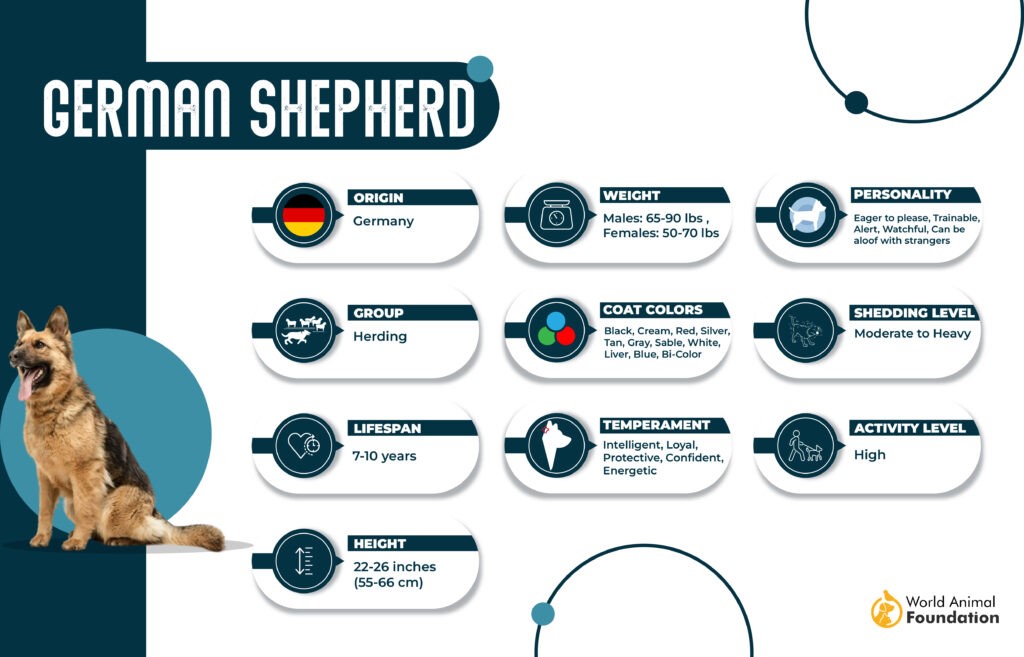
Image Source: World Animal Foundation
Living space plays a vital role when you assess a German Shepherd’s pros and cons. These magnificent dogs just weren’t built to live in tight spaces.
Space requirements for German Shepherds
German Shepherds need plenty of room to thrive both inside and outside your home. Rescue groups ask for a minimum fenced yard area of 1000 square feet (about 20′ x 50′) so your dog can exercise and relieve itself properly. Your yard should connect to the house through a back or side door to keep things safe and convenient.
Inside the house, these large dogs need between 500-1000 square feet to move around comfortably. Their size—24-26 inches tall for males, 22-24 inches for females—means they take up quite a bit of space just by being there.
The quality of your fencing matters just as much as the size. Most groups recommend at least 5-foot-tall fencing for active dogs. You might get away with 4-foot fencing if you have a less energetic dog. Invisible fencing doesn’t work well since other animals can still get into your yard.
Why they struggle in apartments
Life in apartments creates several problems for German Shepherds. They bark to alert you about possible threats—and in an apartment, that means every footstep they hear walking by. This can quickly become a headache for your neighbors.
Daily walks aren’t enough in apartment settings. Without enough space, these dogs often get frustrated. This leads to problems like chewing up furniture, non-stop barking, and sometimes aggressive behavior.
Smart breeds like German Shepherds need to go outside throughout the day, not just during planned walks. Being limited to leashed potty breaks goes against their natural habits and stresses them out.
Time commitment considerations
Beyond space needs, German Shepherds demand a lot of your time:
- Minimum of 2 hours daily exercise
- Cannot be left alone longer than 4 hours
- Need consistent mental stimulation to prevent boredom
- Require supervision during outdoor time
These social dogs get bored and anxious without enough attention. They show their frustration by destroying furniture, barking excessively, or digging up your yard.
If you have a busy lifestyle or limited living space, these demands might make owning a German Shepherd challenging. Despite their adaptable nature, they just can’t thrive without enough room to move and regular human contact.
Conclusion
Looking at German Shepherd pros and cons shows why thinking it over matters before getting one. These dogs combine remarkable intelligence and trainability with steadfast dedication, which makes them exceptional companions for the right owners. Their versatility as working dogs and striking looks add to their appeal, but these benefits come with important responsibilities you shouldn’t overlook.
German Shepherds just need extensive exercise, socialization, and training for their whole lives. You must manage their protective nature properly to prevent overprotectiveness. Future owners should honestly assess if they know how to handle the heavy shedding, provide enough space, and dedicate several hours daily to meet their physical and mental needs.
These magnificent dogs do best with active families that provide structure, purpose, and companionship. The right owner must invest time in training, grooming, and exercise, not just sometimes but every day for 10-13 years. German Shepherds adapt well to different living situations if their core needs are met, but they struggle in apartments or with owners working long hours.
My time with these incredible dogs taught me they’re worth every moment of dedication when matched with the right owners. German Shepherds become more than pets – they turn into devoted family members with exceptional loyalty and partnership. Ask yourself honestly: Can you give the time, space, and dedication this remarkable breed deserves? Bringing a German Shepherd into your life brings extraordinary rewards, but only if you’re truly ready for the responsibility.
FAQs
Q1. Are German Shepherds good family dogs?
German Shepherds can make excellent family dogs when properly trained and socialized. They are loyal, protective, and generally good with children. However, they require consistent training, plenty of exercise, and early socialization to ensure they behave appropriately around family members and strangers.
Q2. How much exercise does a German Shepherd need?
German Shepherds are high-energy dogs that require significant daily exercise. They typically need 60-120 minutes of physical activity per day, which can include walks, runs, playtime, and mental stimulation activities. Without adequate exercise, they may develop behavioral issues.
Q3. Do German Shepherds shed a lot?
Yes, German Shepherds are heavy shedders. They have a double coat that sheds year-round, with heavier shedding periods during spring and fall. Regular brushing (3-4 times a week) is necessary to manage their shedding and maintain their coat health.
Q4. Are German Shepherds easy to train?
German Shepherds are highly intelligent and generally easy to train. They rank as the third-smartest dog breed globally and can learn new commands quickly. However, they require consistent, positive reinforcement-based training methods and mental stimulation to prevent boredom and potential behavioral issues.
Q5. What are the common health issues in German Shepherds?
German Shepherds are prone to certain health problems, including hip dysplasia, elbow dysplasia, and degenerative myelopathy. They may also experience bloat, allergies, and eye problems. Regular veterinary check-ups and proper care can help manage and prevent some of these issues.
